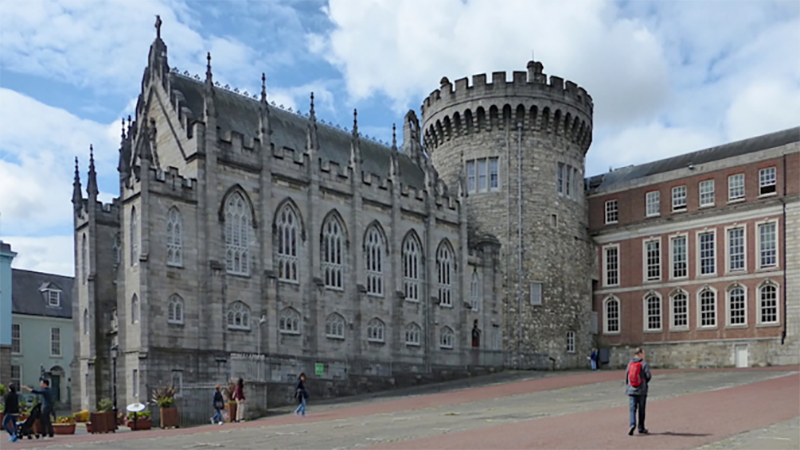John Marshall, Trinity College Dublin/Institute of Historical Research, London
And the barons of Ireland,
Who were in this brawl,
All passed over to Normandy
And told the news to the king,
How the Flemings were slain
And the king of Scotland taken.
So goes the story of the defeat of Earl Robert of Leicester and his Flemish mercenaries at Bury St Edmunds in 1173 as relayed in the Anglo-French text, The song of Dermot and the Earl. The text, which was produced in the late twelfth century to glorify the English conquest of Ireland, provides the earliest reference to the existence, or at least the perceived existence, of a community of the colonial elite of Ireland. These barons of Ireland continued to be major players in the socio-political environment of Ireland and anchors of the English colony therein for centuries to come. This blog post explores who these men were and discusses some instances when they acted collectively in the pursuit of what they viewed as the common good in the thirteenth century.
In the late twelfth century, vast swathes of Ireland were conquered by English knights. The arrival of King Henry II of England (r. 1154–89) in Ireland in the winter of 1171 put the royal stamp on the conquest and marked the moment when Ireland was absorbed into an empire which at one time stretched from Dublin to the Pyrenees. Though now part of the English ‘empire’, throughout the Middle Ages the kings of England only came to Ireland in 1171, 1210, 1394, 1399, and then not again until 1690. Hence, the preservation of English power in Ireland relied on the presence of powerful men, whom, in the Middle Ages, were frequently referred to as the ‘barons of Ireland’ in English record material.
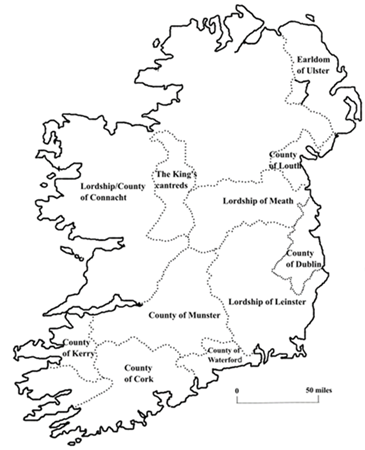
One of the most important roles of the barons of Ireland was to aid the king’s justiciar, who was in charge of carrying out royal mandates and ensuring that law and order were maintained from the royal administrative hub at Dublin castle. On 23 July 1213, for instance, Henry of London, who was the archbishop of Dublin, was appointed justiciar of Ireland, King John (r. 1199–1216) writing that the magnates of Ireland were to lead him with their counsel and aid for the safekeeping of the land.
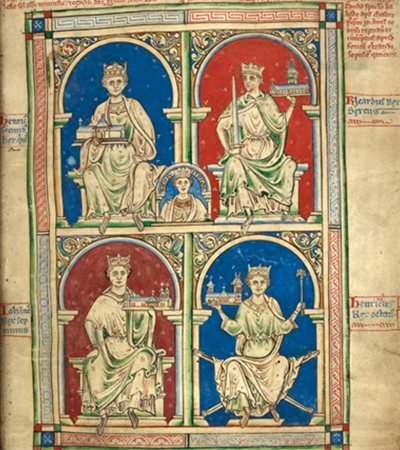
Much more frequently, however, the barons of Ireland took the lead in their relations with the king of England through petitions. On 23 March 1208, for instance, King John instructed that Irish robbers were to be expelled from the country by the counsel of William Marshal, lord of Leinster, Walter de Lacy, lord of Meath, and the king’s other barons of Ireland who were present but not named. The same was the case in July 1248, when King Henry III (r. 1216–72) wrote to the barons of Ireland having heard their requests through their representatives. The barons were looking to extend their liberties as English landholders in Ireland, that is, their rights which primarily pertained to justice. In response, the king sent a writ to the justiciar of Ireland outlining the liberties which he was prepared to grant, the justiciar then tasked with obtaining the views of the barons.
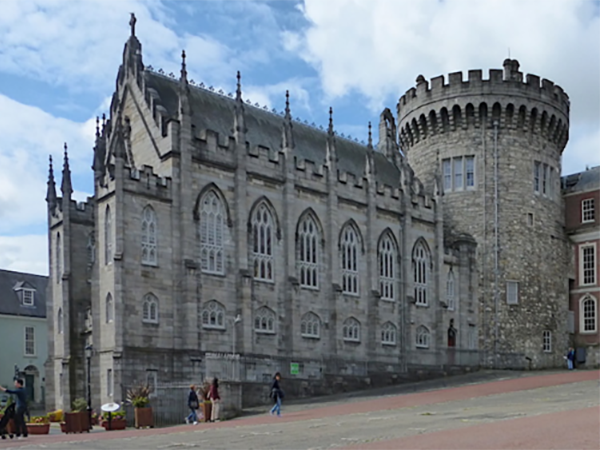
As the thirteenth century progressed, these barons of Ireland often participated in group assemblies regarding issues pertaining to the English settlement in Ireland, some of which were convened by their own initiative and not by royal directive. One such instance occurred at Castledermot in present day Co. Kildare on 6 December 1264, which was attended by the justiciar, Richard de la Rochelle, and other magnates including Walter de Burgh, earl of Ulster and lord of Connacht. There was undoubtedly much to discuss, not only the constitutional crisis in England at the hands of the baronial government of Simon de Montfort, but also conflict between the leading English magnates in Ireland. Inter-baronial warfare had been brewing in Ireland between Walter de Burgh and the powerful Geraldine family, whose landed interests penetrated nearly every region of Ireland. Matters further escalated when Geraldine (fitz Gerald) men stormed the assembly at Castledermot and took the magnates in attendance captive. The Montfortian government proved ineffective from afar, the situation only being stabilised after Geoffrey de Joinville, the lord of Trim in Meath, independently assumed the powers of justiciar of Ireland and eventually brought all parties together to secure a truce in April 1265.
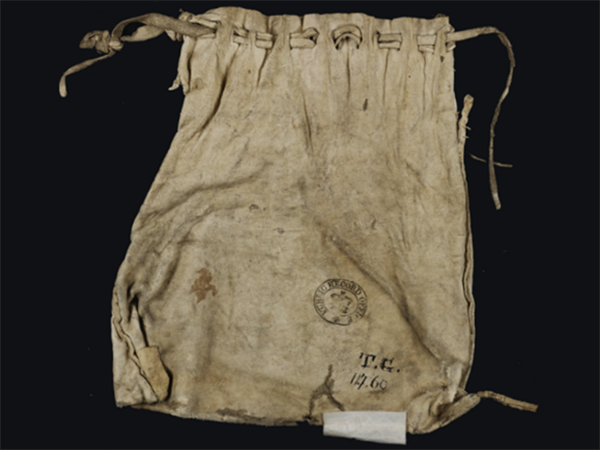
If we are to believe the writer of the annals of Waverley abbey – and there seems no reason not to – after reaching a peace several of the ‘barons and nobles of Ireland’ travelled to England to help the king, arriving after the defeat and dismemberment of Simon de Montfort at Evesham in August 1265. The named barons were the landed elite of Ireland, including Maurice fitz Gerald, Maurice fitz Maurice (also a Geraldine), Walter de Burgh, Theobald Butler and many others who were not named. As we have seen, the de Burghs and Geraldines had been on the edge of all-out war less than a year previously. Yet, through discourse the wounds had been healed and tension subsided, so that the barons of Ireland could rally to their king’s side across the pond in England.
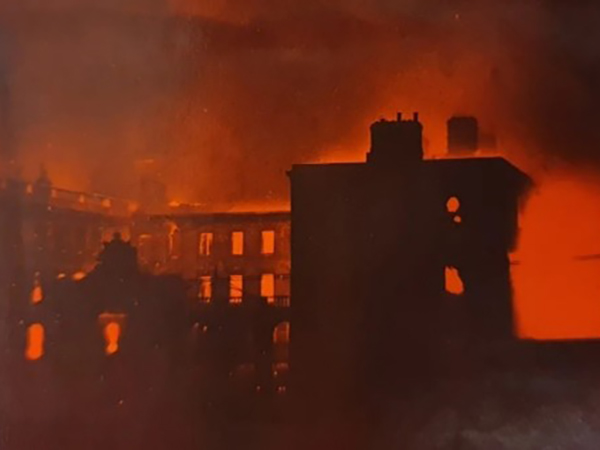
The support of the barons of Ireland for the kings of England took many shapes. In 1208, King John had refused to receive an archbishop appointed by Innocent III (pope from 1198 to 1216), and so the pope placed England under interdict which lasted until 1214. Hence, in 1213 all the magnates of Ireland signed a declaration affirming their support for their king over the pope, stating that with the king they were prepared to live and die. This letter was headed by William Marshal, earl of Pembroke and lord of Leinster, who was joined by twenty-six named barons of Ireland and also by ‘all the magnates of Ireland’ so the letter claimed. Whether these barons were acting of their own initiative or at the direction of the king we cannot be sure, yet it is clear that it was perceived by all involved that a collective affirmation of support for the king by the barons of Ireland would help the king’s cause in Rome.
To conclude then, over the course of this post we have travelled from Ireland to Bury St Edmunds, and from there to the trodden battlefield of Evesham and finally to the heights of the papal curia. In all of these instances, the barons of Ireland proved themselves stalwart supporters of the Plantagenet kings of England. In between these times of crises, the barons of Ireland were regularly involved in providing counsel to the king’s representatives in Ireland, and, as the thirteenth century progressed, they became increasingly involved in communal assemblies, or parliaments, some of which they probably organised independent of royal command. As the English elite of Ireland, these barons were united by common customs and rights, and on numerous occasions they petitioned the king to ensure that these rights and liberties were defended. Of course, the barons of Ireland were not unique in this, and as the Noblesse Oblige? Research Network is exploring, the actions of the barons of Ireland had much in comparison with their counterparts throughout Afro-Eurasia. As we have seen, by teasing through the records of the Plantagenet bureaucracy we can ascertain the names of a number of these barons of Ireland. This is made all the more important due to the fact that all of the English colonial records housed in Ireland were destroyed in the Four Courts in 1922 during the Irish Civil War. And so, perhaps this is the most salient point on which to end this piece. In that by petitioning the king and proving themselves indispensable to the maintenance of royal governance in Ireland, these barons of Ireland left their names to posterity.

